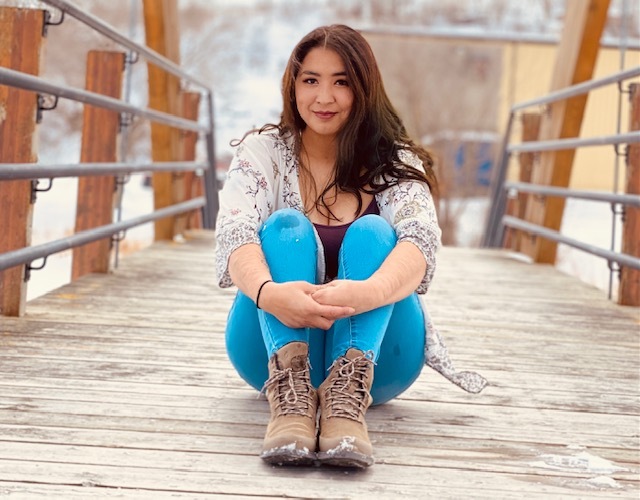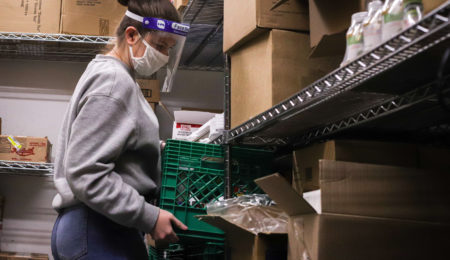Northern Ontario First Nation youth shares her own experience and what motivates her to support her peers in managing mental health and alternatives to self-harm
Content warning: Suicide and self-harm
After using data collected from over 1,400 Ontarian teenagers aged 14-17 in 2014, epidemiologist and University of Ottawa associate professor Ian Colman’s study on non-suicidal self-injury confirms a harmful trend: self-harm is socially contagious.
The work, which was published in the peer-reviewed journal Acta Psychiatrica Scandinavica on Sept. 3, found that children and adolescents are more likely to self harm once they learn that someone else has. This suggests that non-suicidal self injury (such as cutting oneself) is socially contagious.
“Non-suicidal self-injury is much more common than suicide attempts— twice as common in this study — and many, many times more common than death by suicide,” said Colman, who is also a holder of the Canada Research Chair in Mental Health Epidemiology, in a U of O press release.
Colman’s study builds off work from 2013, where Colman looked at the “association between exposure to suicide and suicidality outcomes in youth” which found that if a minor knows of someone who died by suicide, they are more likely to have suicidal thoughts or attempt suicide themselves.
“This sort of communication of ideation and behaviour is a form of contagion, and its spread can be tracked by epidemiologists just as physically communicable diseases are studied,” added the release.
Colman said his study, “is one of the first that proves suicidal behaviour can be socially contagious.” In the study, he writes: “[a minor’s] awareness of a friend’s self-injurious behaviours is associated with an adolescent’s own self-injury and suicidality.”
Additionally, he makes reference to Tara L.Deliberto and Matthew K. Nock study on self-harm which found that “38 per cent of those engaging in self-injury reported getting the idea from a peer who also self-injured.”
In the future, Dr. Colman would like to study the mechanisms by which self-harm becomes socially contagious. Once he uncovers these social mechanisms, social workers, parents, and teachers can better help minors who are vulnerable to the socially contagious effect of self-harm.
He also suggests that parents involve mental health care professionals to ensure that children receive appropriate care, emphasizing how it could help curtail a minor’s engagement in non-suicidal self-injury.
“[Youth] are often quite relieved to have an opportunity to talk about their mental health,” he said.
Cassidy Copenace, a 21 year-old of Naotkamegwanning First Nation (formerly known as Whitefish Bay First Nation), is currently enrolled in the Mental Health and Addiction Worker Program at the Seven Generations Education Institute in Kenora, ON — wanting to be there for her peers as she wished they were for her.
“I want to help others that are struggling the way I have, because I’ve had a lot of experience with cutting, suicide attempts, suicide, thoughts, and drinking,” she said. “I think that I can help people.”
Copenace finds this research relatable, she first began self-harming in 2013 when she was only 14.
“My mom was never really home and getting in fights with my dad,” explained Copenace. “It was traumatic.”
She said she was dealing with overwhelming emotions as anger and sadness feeling alone. She began seeing people on social media share their cuts and scars. Wondering if it would help, she said she tried it.
“Everybody was cutting. It was like a romanticized trend at the time,” she said. “it was kind of hard for me at the time because it was triggering.”
“I saw somebody else do it, I guess. I wondered if it helped them, so I tried it. I’ve been cutting ever since.”
In February, the Canadian Medical Association Journal published an article on social media use and youth mental health. Through 26 studies, it found that social media content (particularly without warnings or promotion to seek out support) has the potential to romanticize mental illness and normalize self-harm among youth.
The research warns of social media comments, which typically contained positive feedback or personal disclosures about self-injury experiences, and rarely offered encouragement or discussion of recovery. At the same time, the research found positive elements, including those providing a sense of community, suggestions for seeking treatment and advice on stopping self-harm behaviour.
“I started going to the hospital for mental health assessments for cutting,” said Copenace, admitting she had attempted suicide while under the influence. “Later that year. I started drinking as well. I got out of the treatment and ever since I started drinking, my cutting got a lot worse.”
Over the years, she found beading as an outlet and a distraction. This has helped her develop self-control when she is in a negative state of mind.
“Whenever I was struggling with the thought of wanting to hurt myself, or wanting to go out and drink, I would bead until I didn’t feel that way anymore,” she said. “Even if I was beading all night, and if I was tired, I would just keep going until I was either super tired, or I just didn’t feel the way I did before I started doing my beadwork.”
“I was sick of [self-harm],” she said. “The initial rush was gone and [I] was sick of going to the hospital.”
“Getting out of the [reserve] is what really helped me. Meeting new people, being in a new place and starting over. I came back to the [reserve], I started doing the same stuff again, and it really annoys me.”
She said during the pandemic it has been hard as there are less activities like volleyball nights which used to take place before COVID-19. She said these factors are what motivated her to apply to the program at the Seven Generations Education Institute.
“I thought to myself, if I’m going to help others then I’m going to have to help myself first,” she said. “I stopped doing it because I was getting into mental health and addictions work. I don’t want to be doing this stuff in college.”
She said it was honesty and empathy as from counsellors and even a police officer she befriended that helped her to open up to others and begin building up her mental health.
“I’m really enjoying the courses in psychology, sociology, substance use and abuse,” she said reflecting on her courses.
“Find somebody who really understands, including past similar experiences, and really understand what you are going through,” she recommends to others.
If you or someone close to you is considering self-harm or suicide, please know that there are supports available here is a non-comprehensive list of local mental health resource…
- University of Ottawa Health Services (UOHS), 100 Marie-Curie Private
- Offers counselling, psychiatric services, individual, couple or family therapy, access to psycho-educational groups and referrals to specialists off-campus
- Student Academic Success Service (SASS), 100 Marie-Curie Private
- Offers individual counselling, peer-counselling, workshops, online therapy and group counselling using new stepped model; referrals
- Faculty mentoring centres (locations differ by faculty)
- Specialized mentoring services catered to the needs of students in each faculty
Off-campus…
- Mental health hotlines…
- Drugs and Alcohol Helpline: 1-866-531-2600
- Fem’aide: 1-877-336-2433
- Good2Talk: 1-866-925-5454
- Kids Help Phone: 1-800-668-6668 or text CONNECT to 686868
- Mental Health Crisis Line: 613-722-6914
- Distress Centre of Ottawa and Region: (613) 238-3311
- Ottawa Rape Crisis Centre: 613-562-2333
- Tel-Aide Outaouais: 613-741-6433
- Trans Life Line: 1-877-330-6366
- Walk-in counselling clinics (six Ottawa locations)…
- Somerset West Community Health Centre (55 Eccles Street)
- South-East Ottawa Community Health Centre (1355 Bank Street)
- Family Services Ottawa (312 Parkdale Avenue)
- Jewish Family Services of Ottawa (300-2255 Carling Avenue)
- Ottawa Community Immigrant Services Organization(959 Wellington St. W)
- CFS/SFC Ottawa (310 Olmstead Road)
- Community health and resource centres (13 in Ottawa)
- Carlington Community Health Centre (900 Merivale Road)
- Eastern Ottawa Resource Centre (215-1980 Ogilvie Road)
- Nepean, Rideau and Osgoode Community Resource Centre (1547 Merivale Road, Unit 240)
- Rideau-Rockcliffe Community Health Centre (225 Donald Street)
- Sandy Hill Community Health Centre (221 Nelson Street)
- South East Ottawa Community Health Centre (1355 Bank Street)
- Western Ottawa Community Resource Centre (2 MacNeil Court)
- Centretown Community Health Centre (420 Cooper Street)
- Lowertown Community Resource Centre (40 Cobourg Street)
- Orleans-Cumberland Community Health Centre (240 Centrum Boulevard)
- Pinecrest-Queensway Community Health Centre(1365 Richmond Road)
- Somerset West Community Health Centre (55 Eccles Street)
- Vanier Community Service Centre (270 Marier Avenue)





